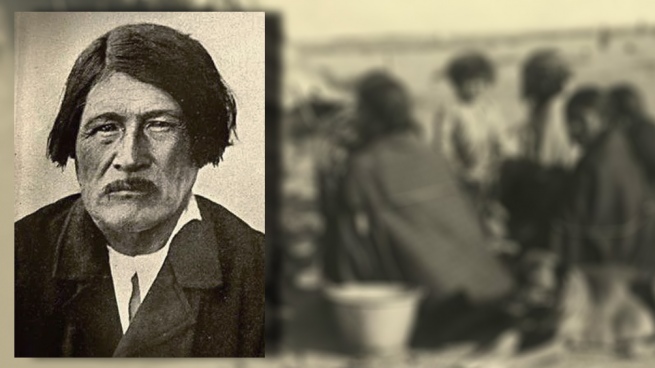A descendant of Tehuelche chief Liempichún Sakamata, whose skeleton was stolen in 1896 Y was exhibited until 2009 at the Musée du Man in Paris, He assured that in the community they are “happy and excited” with the return of the remains of their ancestor to the country after France confirmed to President Alberto Fernández that it accepted the Argentine claim to restore them.
“The news took us by surprise, we had been coming for a long time with our request for restitution and we believed that it was stalled, but so much effort paid off,” Cristina Liempichún, a descendant of the cacique, told Télam today.
In this sense, he assured that “We are excited, happy, it is a light of hope for us that our ancestor can return to our territory.”
“We hope that they contact us to organize the return, we want to travel to France, be there with him (the chief) when the restitution process is carried out,” he said.
Cristina Liempichún imagined “a very special welcome for our ancestor, many people, from everywhere, will accompany us along this journey to bring him to the territory.”
“We always knew what had happened to our ancestor, it was a story within the family. Unfortunately, there are many communities that have suffered dispossession of their territories, their languages, their ancestors,” he said sadly.
The anthropologist of the National Institute of Indigenous Affairs (INAI) Fernando Miguel Pepewho since 2015 has accompanied the claim of the Tehuelche Liempichún Sakamata community, from the Payagniyeo area, in Chubut, also expressed hhey this agency that “personally this new triumph makes me very happy for the communities that have waited so long and with so much patience”.
“We are glad that President Emmanuel Macron and President Alberto Fernández have agreed to speed up this long-awaited restitution. It is a historical fact within the framework of the historical reparation that we are carrying out from the Argentine State with the original communities that suffered the roquis genocide “he explained.
He also considered that “this victory strengthens the struggle of all Argentine and Latin American communities in pursuit of the recovery of their ancestors and territories appropriated by the genocides of the 19th century”.
Sakamata’s story
The skeleton of Liempichún Sakamata ended up in the Museum of Man after, in 1896, Count Henry de La Vaulx will desecrate his tomb and take him to Gallic lands.
Between March 1896 and July 1897, the Count of La Vaulx toured the south of the country and made contact with the Tehuelches of that region, with whom he pretended to become friends.
The stature of the Tehuelches, and especially of Liempichún Sacamata, called his attention so that when he died he dug up his bones and seized his funerary trousseau, in order to take him back to his country and deliver it to the Museum of Hombre, where it was exhibited until 2009.
Some 1,400 objects were taken, including minerals, metals, ceramics, insects, mammal skeletons and an important “collection” of human remains from the original communities of the region, all packed in 29 boxes with a total weight of 1,371 kilos.









